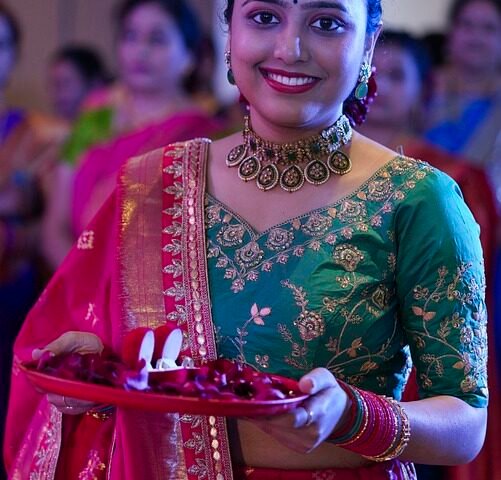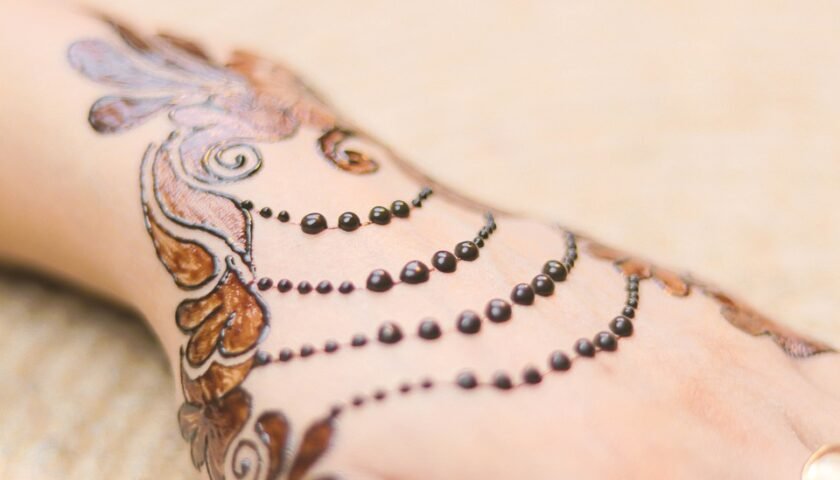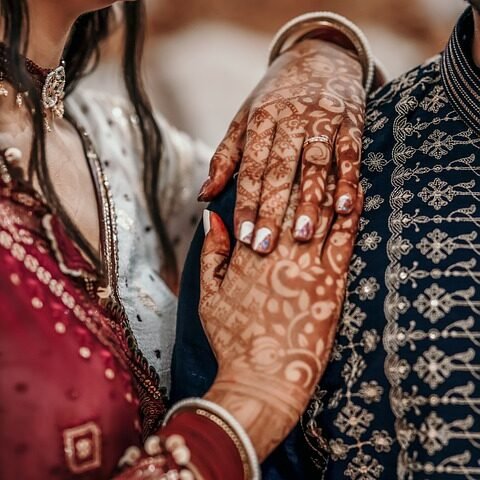[ad_1]
Exploring Different Regional Styles of Traditional Indian Wedding Clothing
When it comes to weddings, India is a country known for its opulent and extravagant celebrations. Traditional Indian weddings are a showcase of cultural heritage, intricate rituals, and vibrant attire. One of the most fascinating aspects of an Indian wedding is the traditional clothing worn by the bride, groom, and their families.
India is a land of diverse traditions, cultures, and languages, and each region has its unique style of wedding clothing. Let’s take a trip around the country and explore some of the distinct regional styles of traditional Indian wedding clothing.
1. Lehenga Choli (North India):
In North India, the bride traditionally wears a Lehenga Choli for her wedding. Lehenga is a long skirt embellished with exquisite embroidery, mirror work, and intricate designs. It is paired with a Choli, a blouse that can be both backless or full-sleeved, depending on the bride’s preference. The ensemble is completed with a dupatta (a long scarf) draped over the shoulder. Rich fabrics like silk, chiffon, and georgette are commonly used, and bright colors are preferred.
2. Banarasi Saree (East India):
In East India, particularly in the state of West Bengal, the bride typically wears a Banarasi saree for her wedding. Banarasi sarees are known for their luxurious silk material, heavy brocades, and intricate zari work. These sarees are often passed down through generations and hold great sentimental value. The color palette for these sarees tends to be rich and bold, with traditional gold or silver motifs.
3. Kanjeevaram Saree (South India):
South Indian weddings are famous for their traditional attire, especially the Kanjeevaram saree. Kanjeevaram sarees are woven from pure silk and are renowned for their bright and contrasting colors. They feature elaborate gold zari borders and motifs inspired by temples, nature, and mythology. These sarees are heavy and opulent, often passed down as family heirlooms.
4. Bandhani or Bandhej (West India):
In the western regions of India, including Rajasthan and Gujarat, Bandhani or Bandhej is a popular choice for wedding ceremonies. Bandhani is a tie-dye technique that creates intricate patterns by tying small portions of the fabric with thread before dyeing it. Bandhani outfits are vibrant and colorful, often featuring a combination of bright shades. The bride may opt for a Bandhani lehenga or a traditional Bandhani saree.
5. Mekhela Sador (Northeast India):
In Northeast India, the traditional attire for weddings is the Mekhela Sador. This outfit consists of a Mekhela, a skirt-like wrap, and a Sador, a pleated scarf worn over the shoulder. The Mekhela Sador is usually made of silk, satin, or cotton, and it is adorned with intricate handwoven designs and motifs. The color combinations reflect the region’s love for vibrant hues and natural elements.
While these are just a few examples, there are countless variations and styles of wedding attire across India. Each region’s traditional clothing showcases its unique textile heritage, craftsmanship, and culture. The intricate details and craftsmanship that go into creating these outfits are a testament to India’s rich cultural diversity.
In recent years, there has also been a blend of regional styles and modern influences, resulting in fusion wedding attire and a more contemporary take on traditional clothing. Designer labels have played a significant role in reviving and reinventing these traditional styles, making them more accessible globally.
Exploring the different regional styles of traditional Indian wedding clothing is like embarking on a captivating journey through the country’s history, art, and cultural tapestry. The beauty of these outfits lies not only in their aesthetics but also in the stories they tell and the sense of identity they impart to those who wear them.
[ad_2]




